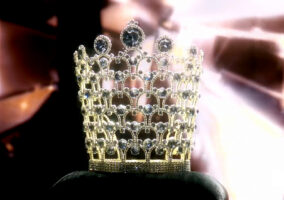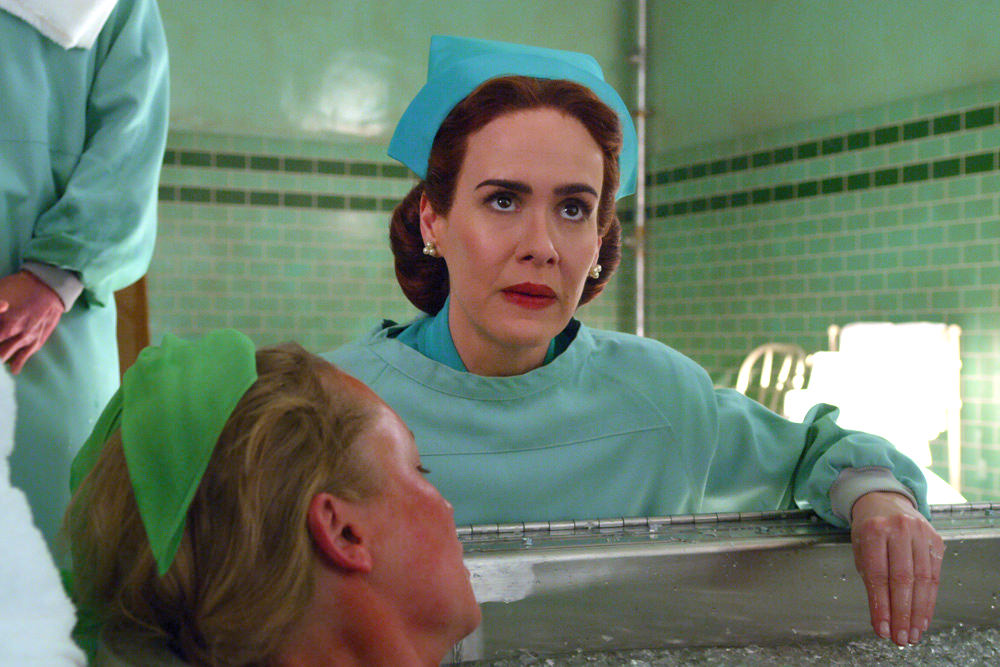
Ratched is lurid nonsense. There. We said it.
If we sound a bit oppositional or defiant about it, it’s because we’ve been sitting on this opinion for quite some time now and the longer we sat with it, the more concerned we became that the reviewing and criticism community were going to do what they occasionally do with Ryan Murphy projects: gush over the visuals, clap gleefully at the boldness, and gloss over the fact that once again, none if it makes a lick of sense. Not that it necessarily matters what others think of the series, but after a while one does tend to get the impression that Murphy is often given quite a bit of leeway because his projects seem tailor-made for social media buzz.
Based on what the series’ promotional copy calls one of the most iconic characters in film history (we tend to think Mickey Mouse, Darth Vader and Scarlett O’Hara would have a few words to say on that claim), Ratched, created by newcomer Evan Romanesky and developed by Murphy (whose signature is all over it) is an attempt to graft an origin story on the character of Nurse Ratched, portrayed to Oscar-winning effect by Louise Fletcher in 1975’s One Flew Over the Cuckoo’s Nest. Here, she’s embodied by Sarah Paulson in a story that takes place roughly 15 to 20 years before the events of the film. The casting is good – the casting is almost always good in a Ryan Murphy-produced series – but the story makes no sense at all and Paulson spends the entire series trying to do the impossible: marry Fletcher’s coolly unsettling portrayal with the over-the-top dramatic roller coaster that is the plot. It never works. First, because Fletcher’s portrayal doesn’t work outside the stark realism of Miloš Forman’s film and second, because Paulson is never given a character whose motivations make sense or whose sudden shifts in temperament are ever explained.
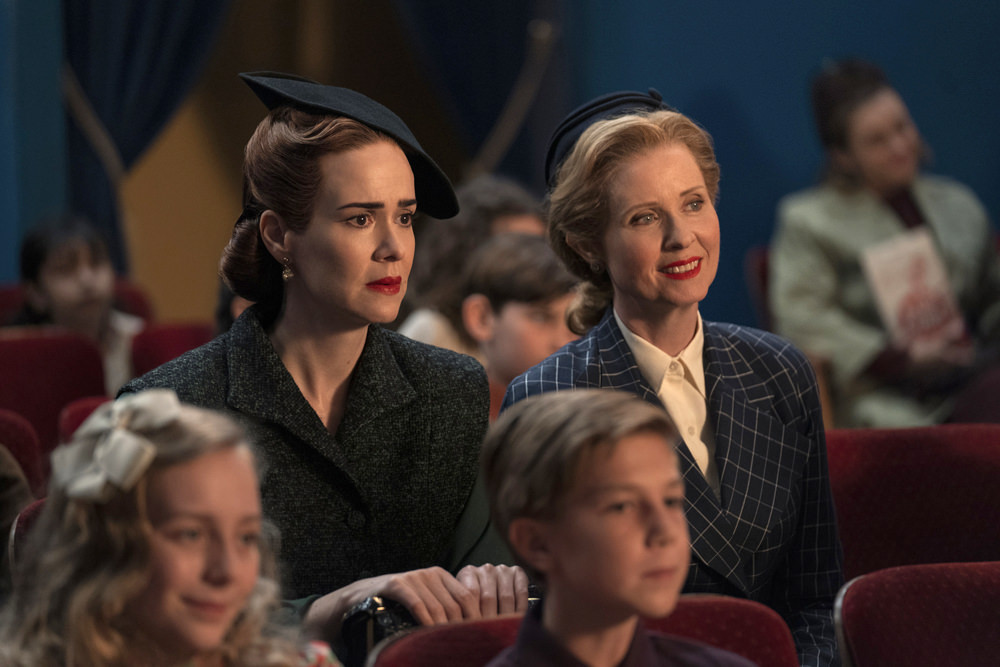
You want to know the origin of Mildred Ratched? According to this series, she’s cold, murderous, rigid, judgmental, and sexually repressed but she’s ALSO scared, horny, loving, caring and a victim. She will forcefully lobotomize a patient or set up a man to be killed for her own reasons but she will also, with no explanation as to why she’s making these shifts, tearfully stand up to her superiors when she feels they don’t have the patients’ best interests at heart. Then again, perhaps we should note that Mildred Ratched exists in an entire world that doesn’t make sense.
It’s a world where there are only three kinds of nurses: shrewish bitches, murderous psychos and nymphomaniacs. It’s a world where mental health issues are portrayed like Shakespearean outbursts and moments of high dramatic camp punctuated with shocking acts of violence. It’s a world where a psychiatric hospital holds a spring fling party where the patients get to dance and drink punch with the staff. It’s a world where dangerous mass murderers get hand jobs from candy stripers in beautifully art-directed holding cells. It’s a world where characters with an almost ludicrous amount of overlapping agendas and storylines all converge on a small motel overlooking the ocean, the coincidences of their meetups and backgrounds piling up with each new reveal and never fully explained. It’s a world where someone sustains a serious and life-threatening gunshot wound, gets operated on – in a psychiatric hospital – and the very next day gets dressed up to go to a puppet show on a whim – from unconscious and hooked up to a ventilator to sporting a smart suit and going on a trip in a matter of hours. Oh, and the puppet show reveals the sexual abuse another character suffered during childhood. Then that same character will re-tell everything the puppets acted out in the following scene because apparently the creators though puppets acting out childhood sexual abuse was too subtle for the audience. Then again, it’s a series that thinks putting a monkey on Sharon Stone’s shoulder is character development.
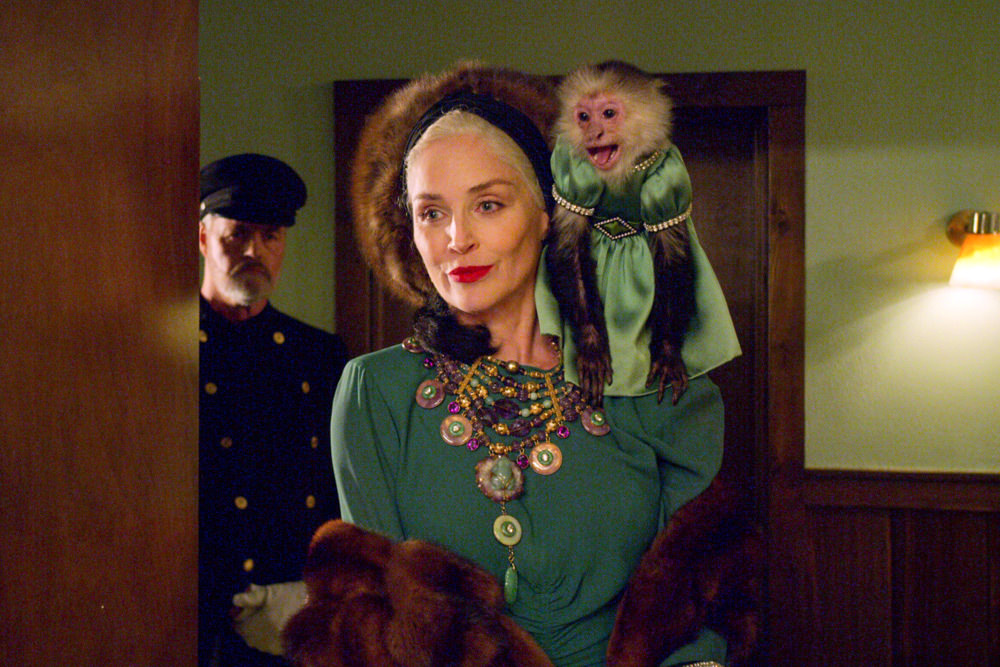
It’s a world of bitchy women in high fashion and severe wigs, cute men in their underwear either murdering or being murdered, and the mentally ill leering, laughing, throwing vases, doing funny voices and stabbing people at the drop of a hat. It’s a world were medical licensing and degrees apparently don’t matter at all; a world where the governor hinges his re-election on a single mental health facility with a history of breakouts, murders, and patient abuse (none of which becomes a scandal or an issue of any real sort). It’s a world where the governor’s white female assistant hides her lesbian predilections in a lavender marriage. To a Black man. In 1947. It’s a world where one character will receive devastating news, suffer a demoralizing personal and professional blow that her character would naturally be reeling from for some time to come and instead is depicted giggling a few minutes later with the person who ruined her life. To say characters’ motivations shift from moment to moment is to suggest they have motivations at all. Reader, they do not.
But, because this is a Ryan Murphy jawn, it’s a beautiful world, for sure. Does it make any sense for these characters to have such enormous high-quality wardrobes? Does it make sense that the “struggling” psychiatric facility looks like a series of grand ballrooms on a luxury liner? No, but neither does it make sense for nurses uniforms to be dyed a deep rich teal color. None of it makes sense, but it all looks fantastic. For reasons that elude us, this origin story of a character from one of the least stylized films of all time is placed in a series that seems at times to be nothing but style, with heavy allusions to the work of Alfred Hitchcock and mid-Century women’s melodrama director Douglas Sirk. The hair is always lacquered, the crystal chandeliers twinkle, the vast walls of draperies line up perfectly, and everything shines with the newness of the recently art-directed.
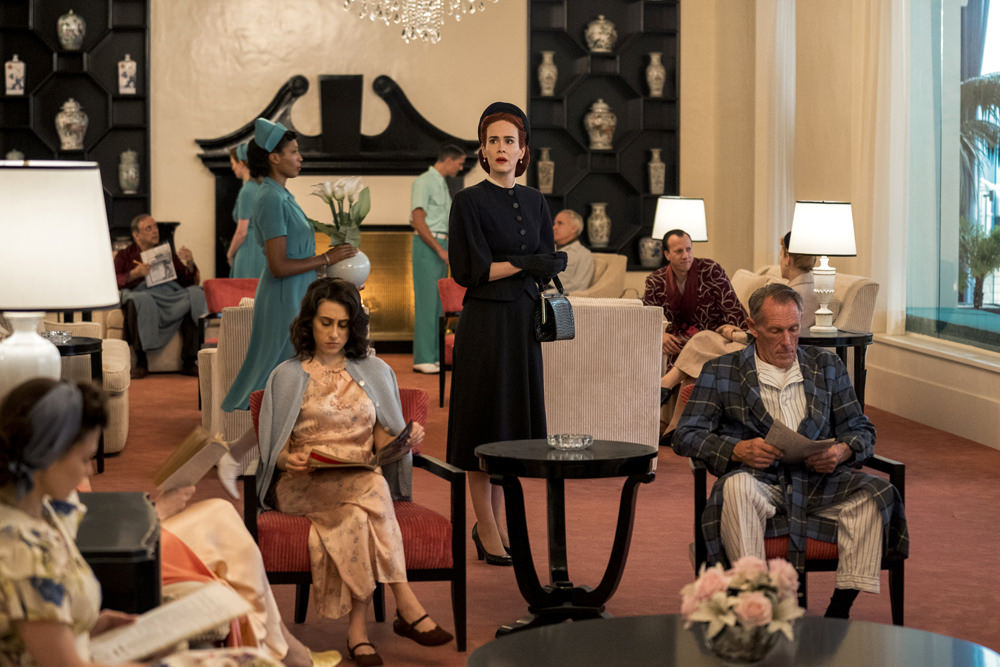
Marrying the sensibilities of Douglas Sirk and Alfred Hitchcock actually sounds like a fun idea at first glance, but the crime of Ratched (well, one of them, anyway) is that it misunderstands both of those directors. You can draw a line connecting their love of well-appointed women and their shared perspective that public niceties tended to hide darker impulses – and for a time, Ratched attempts to make that very connection, but in the end, it tells a story where literally everyone is hiding some grotesque secret, addiction, murderous act or freakish backstory. That might even have worked, except every character turns on a dime at several points in the story, changing their minds or courses of action with little to no explanation, culminating in a finale that is so ludicrous we can’t believe they actually tried it.
And look, we know very well that most of what we’ve written as criticisms here will be seen by some Murphy fans as excellent reasons to tune in. By all means, be our guests. It’s pretty, it’s loaded with great actors (almost all of whom are way better than the material), and it makes the usual Murphy bold narrative swings. But the end result is frustrating and pointless. Don’t say we didn’t warn you.
[Photo Credit: Netflix]
New York Fashion Week: Ulla Johnson Spring 2021 Collection Next Post:
Cathy and Bill Cambridge Visit East London Mosque
Please review our Community Guidelines before posting a comment. Thank you!



